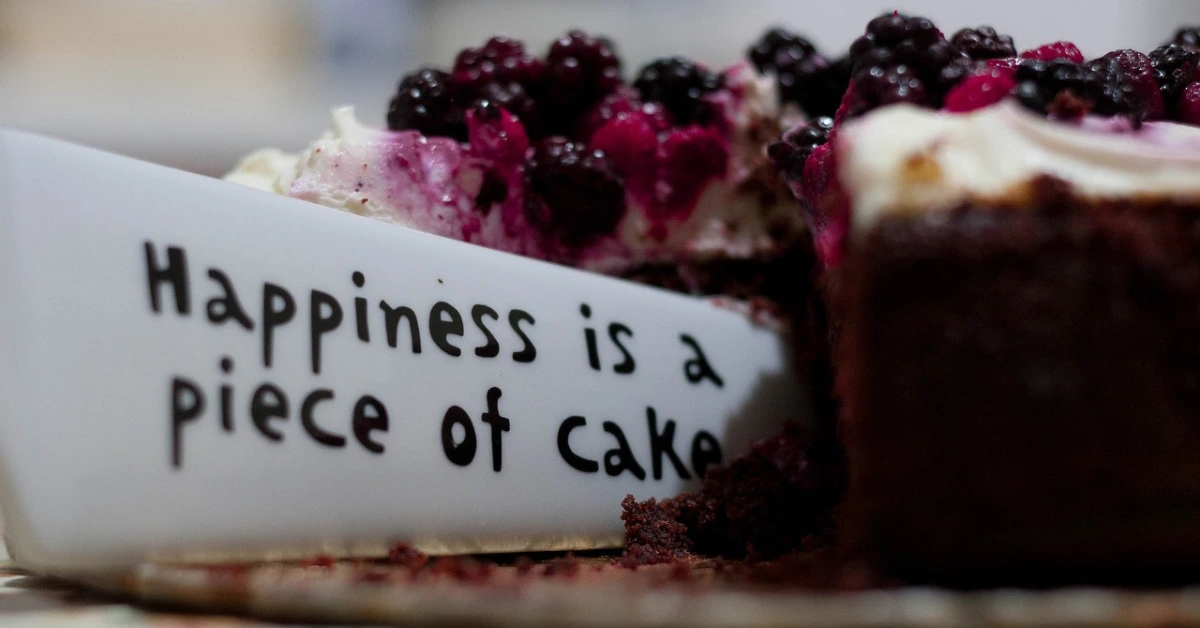What Makes Cheesecake Healthy?
Cheesecake is a dessert beloved by many, but its traditional recipe often comes packed with calories, saturated fat, and added sugars. A healthy cheesecake, however, reimagines this treat by swapping out high-calorie ingredients for more nutritious alternatives. Here’s what makes it healthier:- Low-fat options: Replace full-fat cream cheese with non-fat cream cheese or Greek yogurt.
- Reduced sugar content: Use natural sweeteners like honey, maple syrup, or low-calorie substitutes such as erythritol or stevia.
- Whole food ingredients: Incorporate nutrient-rich components such as almond flour for the crust or oats as a base.
- Lower calorie count: Helps you enjoy dessert without guilt.
- High in protein: Thanks to ingredients like Greek yogurt and cottage cheese.
- Rich in flavor: A healthier recipe doesn’t mean compromising on taste!
Are Cheesecakes Healthy?
If you’ve ever wondered whether cheesecakes are inherently unhealthy, the answer depends on the recipe. Traditional cheesecakes can contain upwards of 500 calories per slice, loaded with refined sugar and saturated fats. However, a healthy cheesecake recipe offers a guilt-free alternative.Comparison Between Traditional and Healthy Cheesecake:- Traditional Cheesecake:
- High in sugar (up to 30g per slice).
- Made with heavy cream and full-fat cream cheese.
- Contains processed ingredients.
- Healthy Cheesecake:
- Lower in sugar (often under 10g).
- Features low-fat cream cheese, Greek yogurt, and natural sweeteners.
- Incorporates nutrient-dense ingredients.
Essential Ingredients for a Healthy Cheesecake Recipe
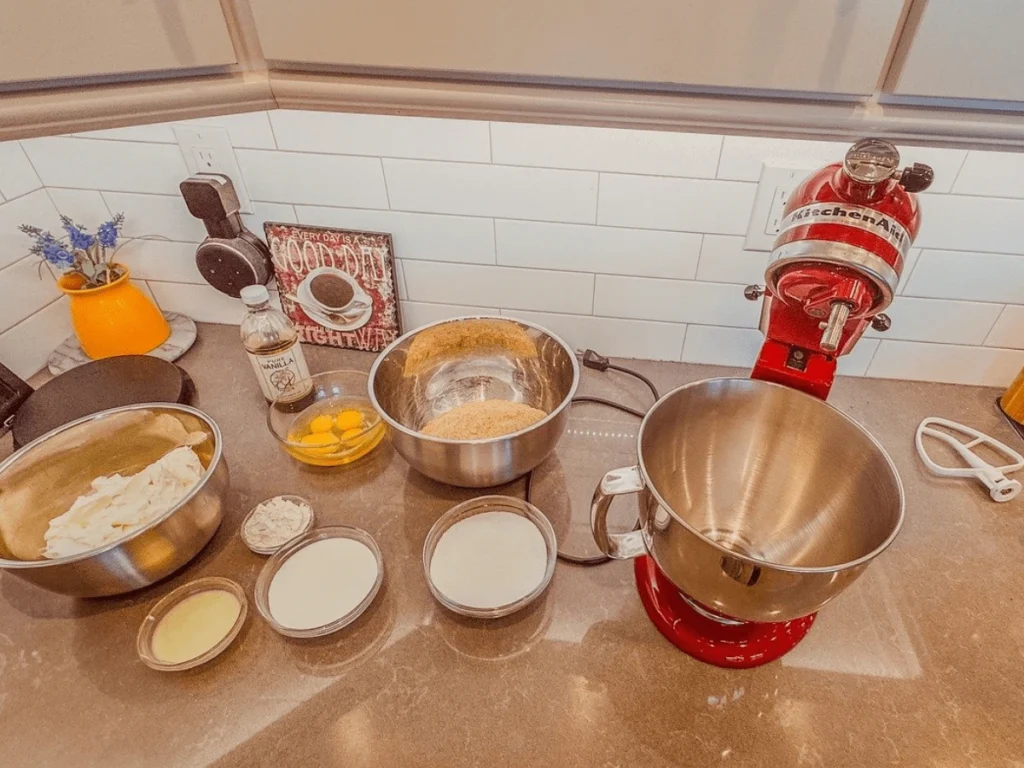 Creating a healthy cheesecake starts with selecting the right ingredients. Each component plays a vital role in achieving the perfect balance of flavor, texture, and nutrition. Below are the essential ingredients you’ll need, along with tips to enhance their benefits.Base Ingredients for the Cheesecake:
Creating a healthy cheesecake starts with selecting the right ingredients. Each component plays a vital role in achieving the perfect balance of flavor, texture, and nutrition. Below are the essential ingredients you’ll need, along with tips to enhance their benefits.Base Ingredients for the Cheesecake:- Low-fat cream cheese: The cornerstone of any cheesecake, choose non-fat or reduced-fat cream cheese for fewer calories without sacrificing creaminess.
- Greek yogurt: Adds a protein boost and a tangy flavor while keeping the filling light. Opt for plain, unsweetened Greek yogurt.
- Natural sweeteners: Replace traditional sugar with options like honey, maple syrup, or erythritol. These alternatives have fewer calories and a lower glycemic index.
- Almond flour or oats: Instead of processed graham crackers, use almond flour or ground oats to make a gluten-free, nutrient-dense base.
- Coconut oil or butter substitutes: Use coconut oil or a low-calorie butter alternative to bind the crust.
- Optional: Gluten-free graham crackers: If you prefer a classic taste, opt for gluten-free or whole-grain options.
- Vanilla extract: A dash of pure vanilla extract elevates the flavor profile.
- Fresh fruit or zest: Add depth with lemon zest, strawberries, or blueberries.
- Cocoa powder or cinnamon: For a chocolate or spice-infused variation.
Key Tools You’ll Need in Your Kitchen
Having the right tools ensures your cheesecake comes out perfectly creamy and smooth. Here’s what you’ll need:- Springform pan: Essential for easy release and presentation.
- Blender or food processor: Helps achieve a silky-smooth filling.
- Mixing bowls and whisk: For combining the crust and filling with ease.
- Measuring cups and spoons: Precision is key to a balanced recipe.
How to Make a Healthy Cheesecake Recipe: Step-by-Step
Now that you have the ingredients and tools ready, let’s dive into the process of making a healthy cheesecake. Follow this easy guide to create a delicious dessert that’s light, creamy, and packed with flavor.Step 1: Prepare the Crust
A good crust forms the foundation of any cheesecake. Here’s how to make a healthy, no-bake crust:- Gather your crust ingredients:
- 1 cup almond flour or oats.
- 3 tablespoons coconut oil or a low-calorie butter substitute.
- 1–2 tablespoons honey or maple syrup for sweetness.
- Mix the ingredients:
- In a bowl, combine the almond flour or oats with the sweetener and coconut oil. Mix until the texture is moist and crumbly.
- Press into the pan:
- Using a spatula or the back of a spoon, firmly press the crust mixture into the bottom of a springform pan. Ensure it’s evenly spread for a solid base.
- Chill in the refrigerator while you prepare the filling.
Step 2: Make the Cheesecake Filling
The filling is where the creamy, decadent texture comes to life. Using healthy ingredients like Greek yogurt and low-fat cream cheese, this step ensures your cheesecake stays light and delicious.- Combine your filling ingredients:
- 16 oz low-fat cream cheese, softened.
- 1 cup Greek yogurt.
- ⅓ cup honey or a low-calorie sweetener like erythritol.
- 1 teaspoon vanilla extract.
- Optional: lemon juice or zest for a tangy kick.
- Blend until smooth:
- Use a blender or food processor to mix the ingredients until the filling is creamy and lump-free. Be sure to scrape down the sides to incorporate everything.
- Taste and adjust:
- Taste the filling and adjust sweetness or flavor as needed. A touch more honey or vanilla can balance flavors beautifully.
Step 3: Assemble the Cheesecake
With the crust chilled and the filling prepared, it’s time to bring everything together.- Pour the filling:
- Remove the crust from the refrigerator and pour the creamy filling over it. Spread evenly with a spatula.
- Smooth the top:
- Gently smooth the surface with the back of a spoon or an offset spatula for a clean finish.
Step 4: Bake or No-Bake Options
Depending on your preference, you can bake the cheesecake for a classic texture or opt for a no-bake version.For a Baked Cheesecake:- Preheat the oven to 325°F (163°C).
- Place the springform pan in a water bath to prevent cracks.
- Bake for 50–60 minutes, or until the edges are set and the center jiggles slightly.
- Turn off the oven, crack the door, and let the cheesecake cool slowly to room temperature.
- Simply chill the assembled cheesecake in the refrigerator for at least 4–6 hours, or overnight, until firm.
Step 5: Decorate and Serve
The final touch is decorating your healthy cheesecake with toppings that enhance its flavor while keeping it nutritious.Healthy Topping Ideas:- Fresh fruits: Strawberries, blueberries, or kiwi slices.
- Nuts: Crushed almonds, walnuts, or pecans.
- Drizzle: A light swirl of honey, maple syrup, or dark chocolate.
Healthy Cheesecake Recipe No Bake
If you’re short on time, a healthy no-bake cheesecake is the perfect solution. This version skips the oven but delivers the same creamy goodness.- Use the same crust and filling recipe.
- After assembling, let the cheesecake set in the refrigerator for several hours.
- Enjoy a refreshing dessert with minimal effort!
Can I Use Greek Yogurt Instead of Cream Cheese in Cheesecake?
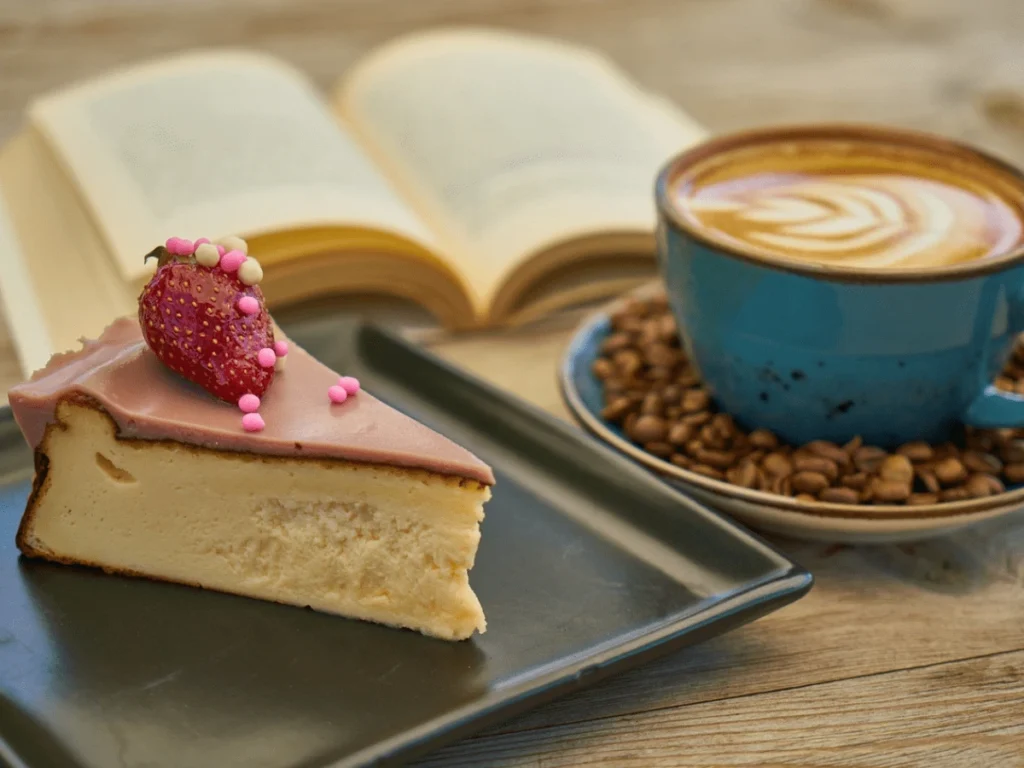 One of the most frequently asked questions about healthy cheesecake recipes is whether Greek yogurt can replace cream cheese. The answer is a resounding yes! Not only does Greek yogurt offer a tangy flavor, but it also significantly reduces the calorie and fat content.Why Use Greek Yogurt?
One of the most frequently asked questions about healthy cheesecake recipes is whether Greek yogurt can replace cream cheese. The answer is a resounding yes! Not only does Greek yogurt offer a tangy flavor, but it also significantly reduces the calorie and fat content.Why Use Greek Yogurt?- High protein content: Makes the cheesecake more filling and nutritious.
- Lower fat levels: Keeps the dessert lighter compared to full-fat cream cheese.
- Probiotic benefits: Supports gut health when using unsweetened, live-culture Greek yogurt.
Healthy Cheesecake Recipe with Greek Yogurt Variations
Variety is the spice of life, and cheesecake is no exception. Below are some fun and healthy ways to add unique flavors to your cheesecake while maintaining its nutritious profile.1. Berry Delight Cheesecake- Mix fresh blueberries, raspberries, or strawberries into the filling before baking or chilling.
- Add a berry compote topping made by simmering berries with a dash of honey.
- Add lemon juice and zest to the filling for a bright and tangy flavor.
- Garnish with thin slices of lemon or edible flowers for a stunning presentation.
- Incorporate unsweetened cocoa powder into the filling for a chocolate twist.
- Drizzle with melted dark chocolate and sprinkle with crushed nuts for a decadent touch.
- Add pineapple chunks or mango puree to the filling.
- Use shredded coconut or toasted coconut flakes as a topping for a tropical vibe.
Easy Healthy Cheesecake Recipe Tips
Creating the perfect healthy cheesecake requires a few tricks to ensure a smooth, satisfying result every time.- Avoid overmixing the batter: Overmixing can incorporate too much air, leading to cracks in the cheesecake.
- Use a water bath for baked cheesecake: This prevents the edges from overcooking and ensures even baking.
- Chill thoroughly for no-bake versions: Allow at least 6 hours for the cheesecake to set properly in the fridge.
Is Cheesecake Healthier Than Normal Cake?
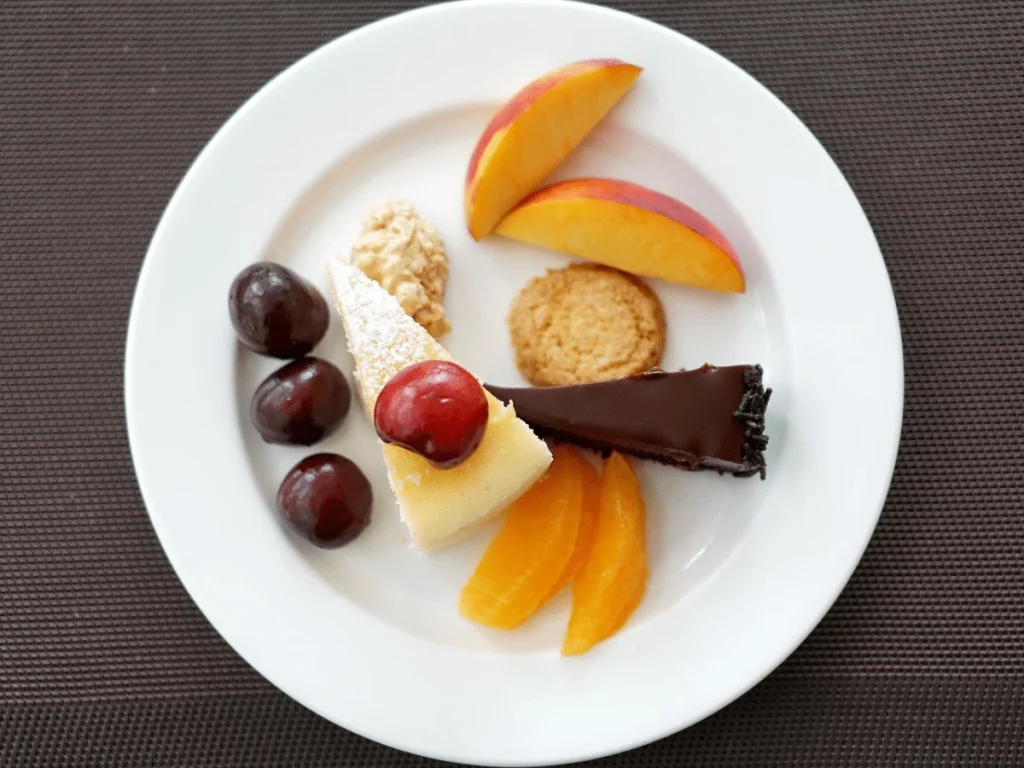 When it comes to dessert, many people wonder if cheesecake is a better choice than a traditional cake. While the answer depends on the recipe, healthy cheesecake recipes often have the nutritional edge. Let’s break it down.Traditional Cake vs. Healthy Cheesecake: A Nutritional Comparison
When it comes to dessert, many people wonder if cheesecake is a better choice than a traditional cake. While the answer depends on the recipe, healthy cheesecake recipes often have the nutritional edge. Let’s break it down.Traditional Cake vs. Healthy Cheesecake: A Nutritional Comparison- Calories:
- A slice of regular cake can contain 300–600 calories, depending on the frosting and ingredients.
- A healthy cheesecake slice, made with Greek yogurt and low-fat cream cheese, typically ranges from 150–250 calories.
- Sugar Content:
- Normal cakes use refined sugars in the batter and frosting, contributing to blood sugar spikes.
- Healthy cheesecakes rely on natural sweeteners like honey, maple syrup, or erythritol for a lower glycemic impact.
- Protein Content:
- Cakes are usually low in protein, relying on ingredients like butter and sugar for texture.
- Healthy cheesecake recipes, enriched with Greek yogurt and low-fat dairy, provide a higher protein content, helping you stay full longer.
- Lower calorie density: Perfect for those watching their caloric intake.
- Fewer processed ingredients: Focuses on whole foods and nutrient-rich options.
- High protein: A better choice for post-meal satisfaction without overindulgence.
Why Choose Cheesecake Over Other Desserts?
Cheesecake, especially the healthy version, offers unique benefits that set it apart from other common desserts like brownies, cookies, or pies.1. Balanced Sweetness:- Cheesecake has a mild sweetness, making it a great option for those who dislike overly sugary desserts.
- Thanks to its creamy filling, cheesecake satisfies cravings without the need for heavy cream or butter.
- With options like no-bake cheesecake and Greek yogurt-based recipes, it’s easy to adapt cheesecake to dietary needs.
What is No-Bake Cheesecake Filling Made Of?
A no-bake cheesecake offers an easy and quick alternative to the traditional baked version. The filling relies on ingredients that set without the need for an oven, making it ideal for those who want a hassle-free dessert.Key Ingredients in a No-Bake Cheesecake Filling:- Low-fat cream cheese: Provides a creamy, tangy base for the filling.
- Greek yogurt: Adds protein and helps maintain a light texture.
- Natural sweeteners: Use honey or maple syrup for sweetness without refined sugars.
- Gelatin or agar-agar: Ensures the filling sets firmly while staying smooth.
- Vanilla extract: Elevates the flavor profile with a subtle hint of sweetness.
FAQs About Healthy Cheesecake Recipes
To help you master your cheesecake-making skills, here are answers to some common questions:1. Are Cheesecakes Freezer-Friendly?- Yes! Healthy cheesecakes can be stored in the freezer for up to 2–3 months.
- How to store: Wrap individual slices in parchment paper, then place them in an airtight container to prevent freezer burn.
- How to serve: Thaw in the refrigerator overnight before enjoying for the best texture.
- Absolutely! Simply replace the crust ingredients with gluten-free options like:
- Almond flour.
- Gluten-free graham crackers.
- Ground oats.
- Check all other ingredients, especially sweeteners and toppings, for gluten-free certification.
- Replace cream cheese and Greek yogurt with plant-based alternatives like:
- Cashew cream: Soaked and blended cashews provide a rich, creamy texture.
- Coconut cream: A great substitute for adding density to the filling.
- Use maple syrup as a natural sweetener and agar-agar as the setting agent for no-bake options.
- Yes, low-fat cottage cheese is a fantastic substitute for cream cheese. It’s high in protein and creates a lighter texture.
- Pro Tip: Blend the cottage cheese until smooth before incorporating it into the filling for a consistent texture.
- Keep your cheesecake light and nutritious by choosing toppings like:
- Fresh fruits (strawberries, blueberries, or kiwi).
- Crushed nuts (almonds, walnuts, or pecans).
- A drizzle of dark chocolate or a dollop of Greek yogurt.
How to Serve Your Healthy Cheesecake
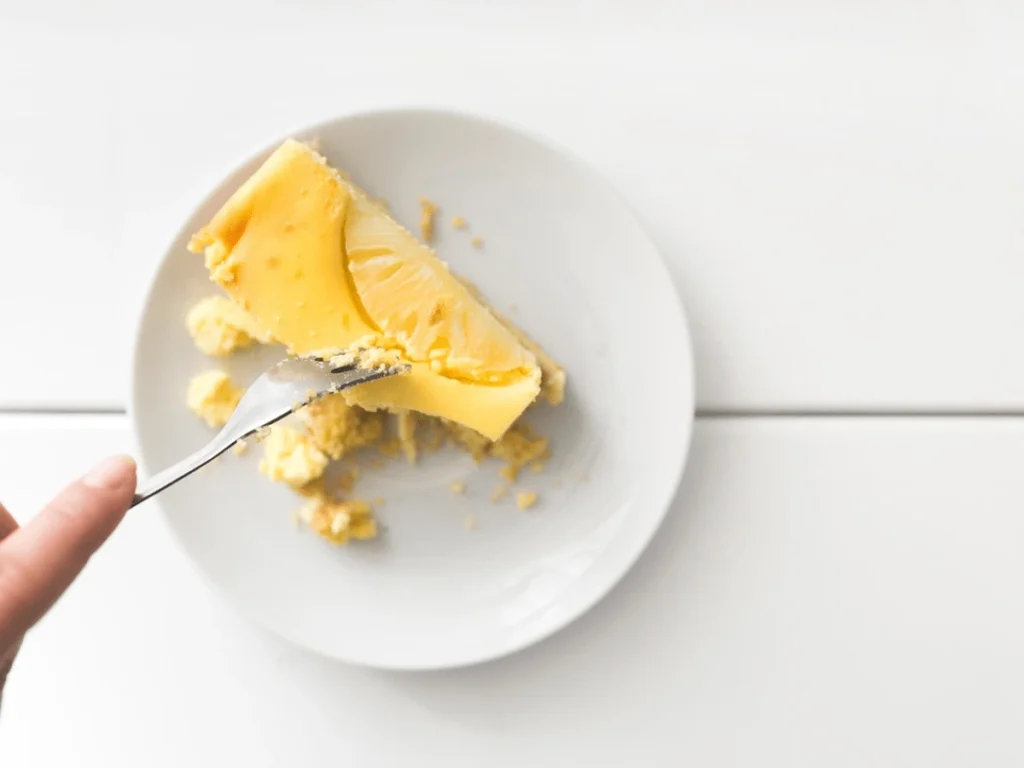 Presentation and pairing can elevate your healthy cheesecake to a whole new level. Whether you’re hosting a dinner party or treating yourself, serving your cheesecake with style adds to the indulgence.1. Simple and Elegant Presentation:
Presentation and pairing can elevate your healthy cheesecake to a whole new level. Whether you’re hosting a dinner party or treating yourself, serving your cheesecake with style adds to the indulgence.1. Simple and Elegant Presentation:- Slice the cheesecake with a clean, sharp knife. For the smoothest cuts, dip the knife in warm water and wipe it clean between slices.
- Garnish with:
- Fresh fruits like strawberries, blueberries, or kiwi slices.
- A light dusting of cocoa powder or cinnamon.
- A drizzle of honey, maple syrup, or dark chocolate.
- Beverages:
- Herbal teas like chamomile or mint.
- Lightly brewed coffee or unsweetened iced tea.
- Sides:
- A small bowl of fresh fruit salad.
- Crunchy almond biscotti for texture contrast.
How to Store Your Healthy Cheesecake
Proper storage is key to maintaining the flavor and texture of your cheesecake for days after preparation.1. Refrigeration:- Store your cheesecake in an airtight container in the refrigerator for up to 5–7 days.
- Keep it covered to prevent it from absorbing other odors from the fridge.
- Wrap tightly: Slice your cheesecake into portions, then wrap each slice in parchment paper. Place the wrapped slices in a freezer-safe container.
- Freezer life: Healthy cheesecakes can last up to 2–3 months in the freezer.
- Thaw properly: Allow the slices to thaw in the refrigerator overnight before serving.
Encouragement to Experiment with Recipes
One of the joys of making healthy cheesecake is its versatility. You can easily tweak the recipe to suit your personal preferences or dietary needs.1. Get Creative with Flavors:- Add seasonal fruits like pumpkin for a fall-themed cheesecake.
- Experiment with spices like nutmeg or cardamom for a unique flavor twist.
- For a festive touch, create mini cheesecakes in muffin tins.
- Use heart-shaped molds for a romantic dessert.
- Make your cheesecake stand out with homemade sauces such as:
- Berry coulis made by simmering fresh fruits with honey.
- Salted caramel for a decadent drizzle.
